30 Common Lawn Weeds and How to ID Them (Plus Free Downloadable Chart)
Updated: Aug. 04, 2022
Meet the most common botanical interlopers you're likely to find in your garden or vegetable patch, and learn how to treat each.
Our editors and experts handpick every product we feature. We may earn a commission from your purchases.
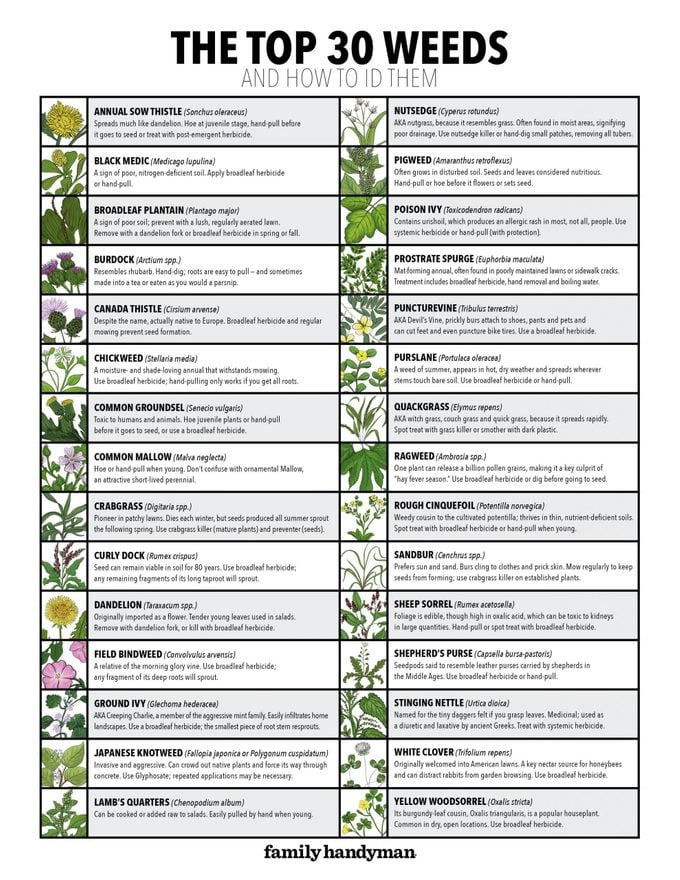
It’s been said that a weed is just a plant growing where you don’t want it to. Some are aggressive to the point of being invasive, while others have redeeming qualities you might want to consider before eradication efforts begin. (We’re talking about you, white clover.) Read on for all you need to identify the most common yard and garden weeds, plus tips for treatment.
Download a PDF version of this chart.
Annual Sow Thistle (Sonchus oleraceus)
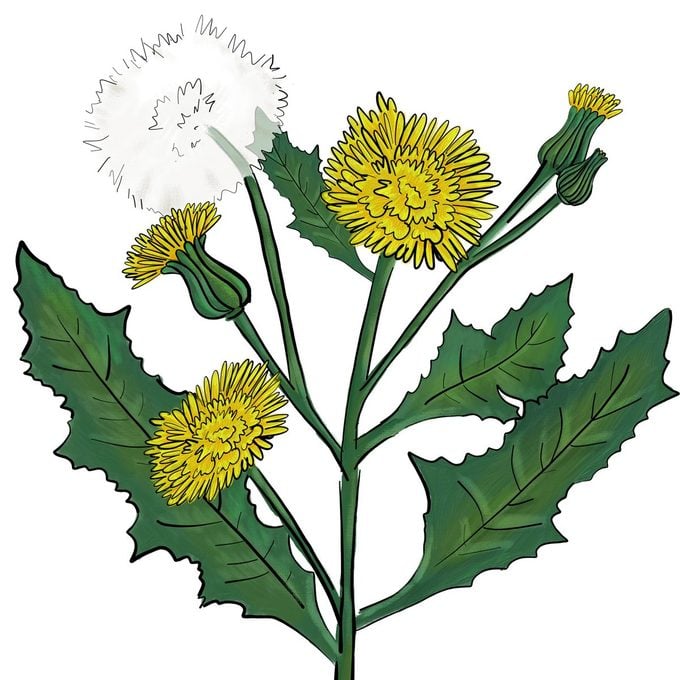
Spot It: Throughout the U.S. and southern Canada.
ID It: Upright plants with smooth, thick stems and bluish green, deeply lobed leaves; yellow dandelion-type flowers that mature into white puffs of seeds.
Get Rid of It: Hoe at juvenile stage, hand-pull before it goes to seed or treat with post-emergent herbicide.
What to Know: The small brown seeds are carried on white puffs through air and water, much like dandelion. Unopened flowers have a telltale funnel shape.
Make your own weed killer with vinegar and dish soap.
Black Medic (Medicago lupulina)
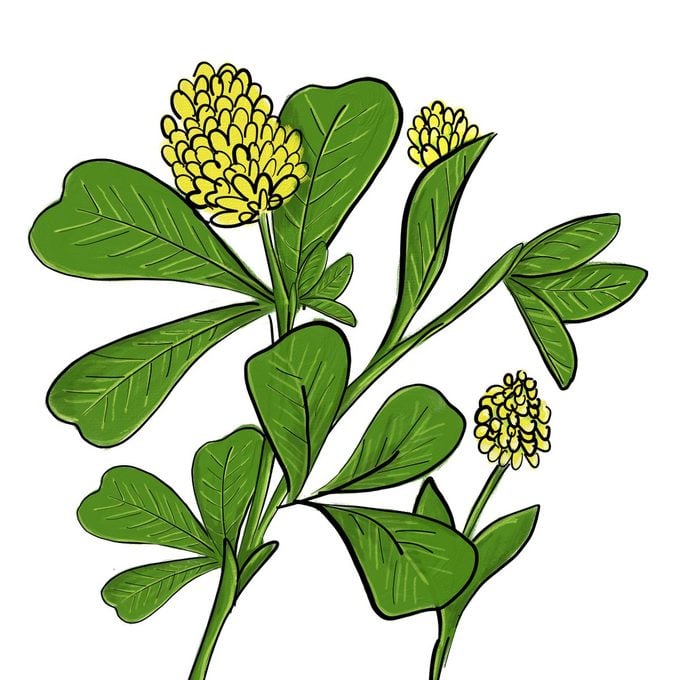
Spot It: Introduced from Europe; common throughout the U.S. and parts of Canada.
ID It: Thick mats of low-growing, slightly hairy stems and three-leaflet leaves similar to clover; small yellow flowers in spring followed by black kidney-shape seedpods.
Get Rid of It: Broadleaf herbicide or hand-pull.
What to Know: A sign of poor, nitrogen-deficient soil, which makes sense because like peas, black medic can fix its own nitrogen. Also called Yellow Trefoil, Nonesuch and Hop Clover.
Discover the best natural way to kill weeds.
Broadleaf Plantain (Plantago major)
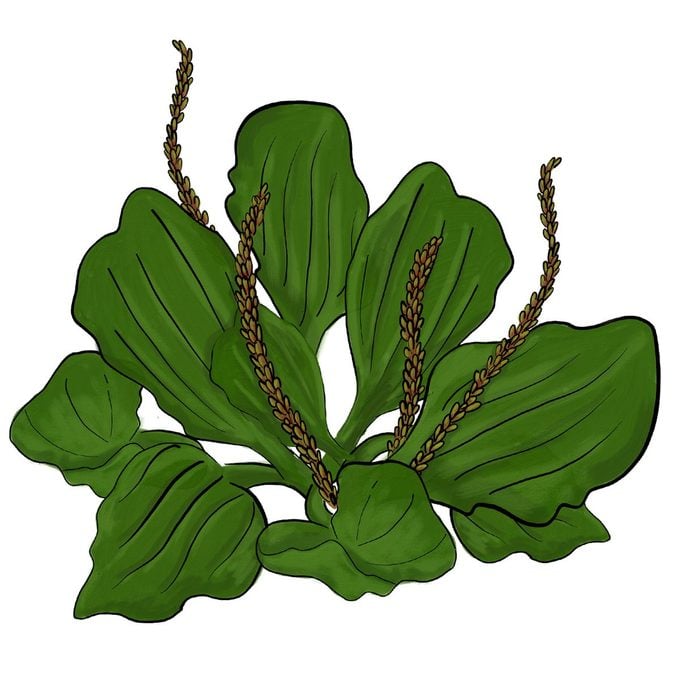
Spot It: Throughout the U.S. and southern Canada.
ID It: Rosettes of large leaves, topped by seed stalks in summer.
Get Rid of It: Broadleaf herbicide in spring or fall; or remove by hand with a dandelion fork.
What to Know: A sign of poor soil, a thick, lush lawn is the best defense against this perennial weed. Regular aeration also helps, as broadleaf plantain grows in compacted soils.
Here’s how to get rid of Bermuda grass in your garden.
Burdock (Arctium spp.)
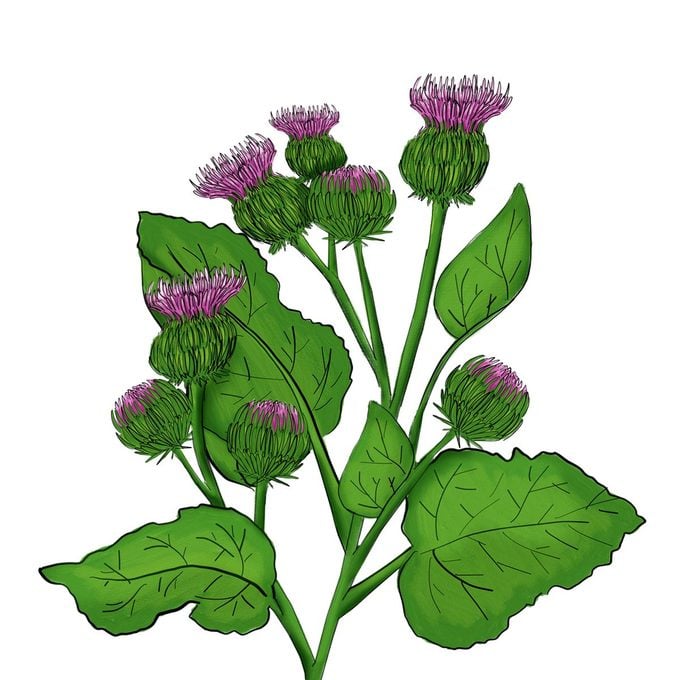
Spot It: Throughout most of the continental U.S. (except Florida) and southern Canada.
ID It: Broad, hairy leaves form a rosette; fuzzy purple-pink flowers mature into burrs that cling to all that passes.
Get Rid of It: Hand dig; the roots are easy to pull.
What to Know: With its large leaves, burdock looks a bit like rhubarb. Its roots are sometimes made into a tea or eaten as you would a parsnip. Do note that the the burrs on burdock can be dangerous for goldfinches.
Canada Thistle (Cirsium arvense)
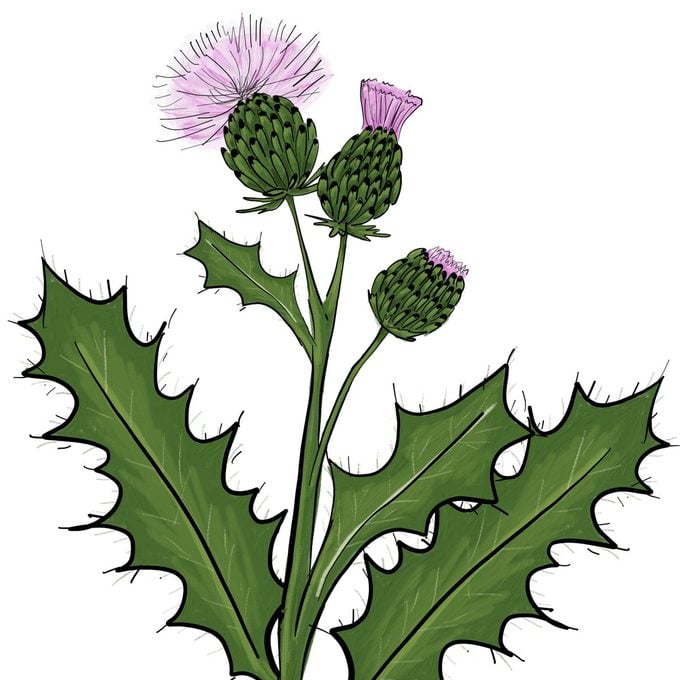
Spot It: European native; found throughout most of the U.S. and part of Canada.
ID It: Upright plant that grows two to three feet tall; serrated lance-shaped leaves; purple, pink or sometimes white flowers in midsummer, followed by fluffy seedheads.
Get Rid of It: Broadleaf herbicide and regular mowing to prevent seed formation.
What to Know: This perennial weed spreads by seeds and a migrating root system. Despite the name, it’s actually native to Europe and brought to North America in the 1600s.
Check out 12 ways to win the war on weeds.
Chickweed (Stellaria media)
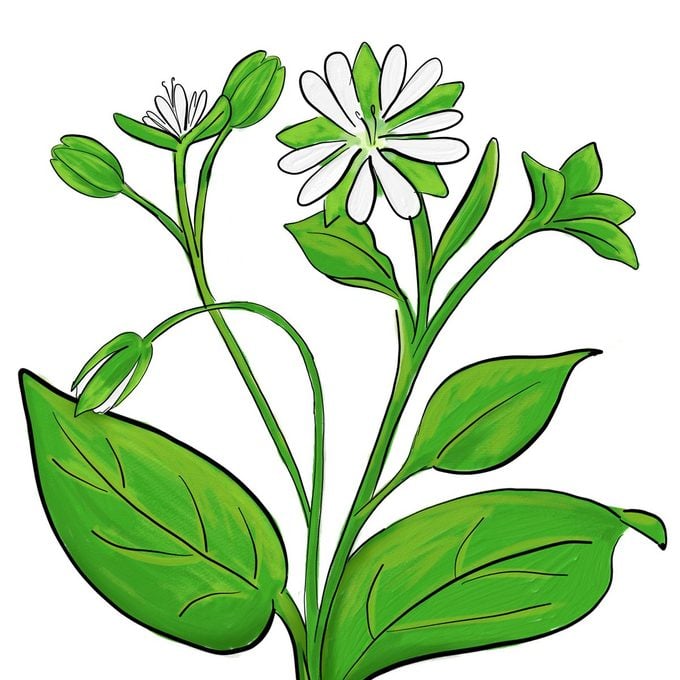
Spot It: Throughout the U.S. and Canada.
ID It: Narrow, fleshy, fuzzy leaves; small white flowers in late spring and early summer.
Get Rid of It: Broadleaf herbicide; hand pulling only works if you get all the roots.
What to Know: Often found growing in fertile soils, this annual prefers moist, shady areas. Chickweed grows close to the ground and so withstands mowing.
Common Groundsel (Senecio vulgaris)
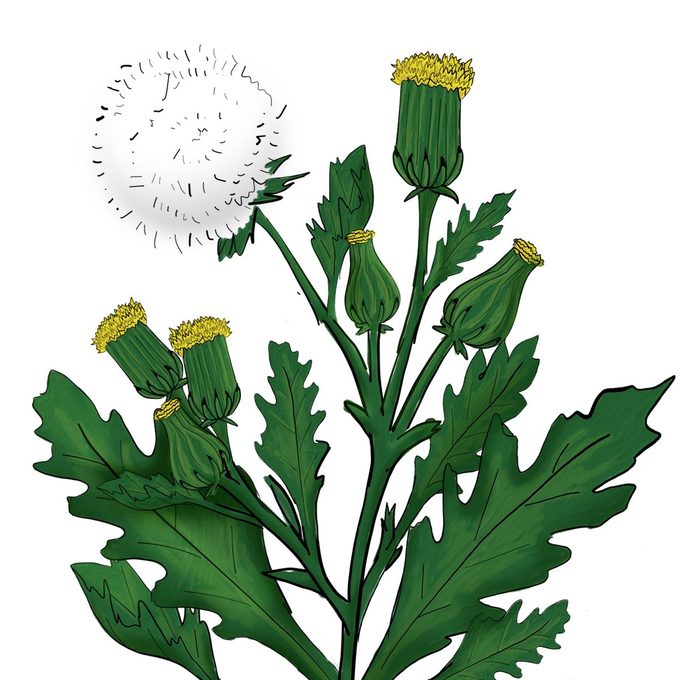
Spot It: European native now found throughout North America.
ID It: Variable leaves, usually deeply lobed with toothed margins; clusters of tiny yellow flowers on single stems, followed by puffy white seedheads.
Get Rid of It: Hoe juvenile plants or hand-pull this prolific plant before it goes to seed; or use a broadleaf herbicide.
What to Know: An annual or biennial, also called old-man-in-the-spring. It’s a host for a fungus that causes black root rot disease in a number of edibles, including peas and carrots. Toxic to humans and animals.
Common Mallow (Malva neglecta)
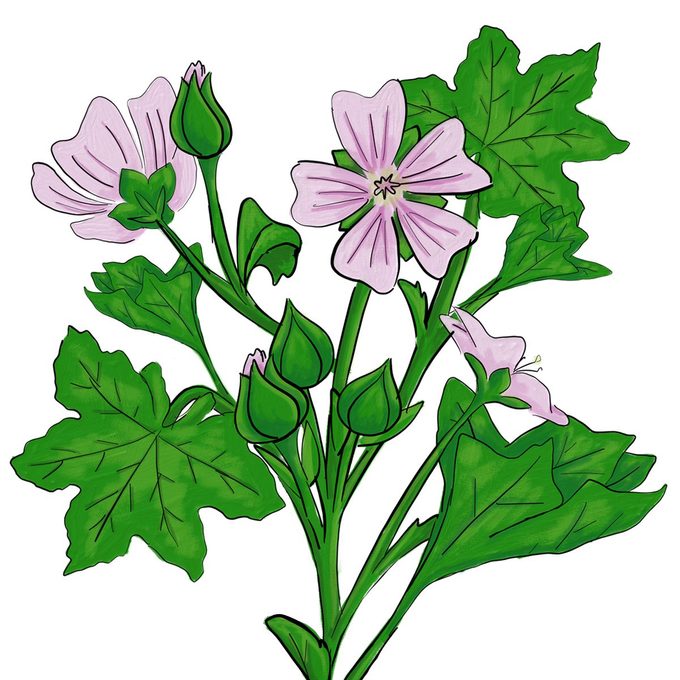
Spot It: Throughout North America.
ID It: Dark green, crinkled round to kidney shaped leaves with serrated edges; white to whitish-lavender flowers in late spring into summer.
Get Rid of It: Hoe or hand-pull when young.
What to Know: Common Mallow can be an annual or biennial, depending on where it’s growing. Don’t confuse Common Mallow with an ornamental species of Mallow, an attractive short-lived perennial.
Crabgrass (Digitaria spp.)
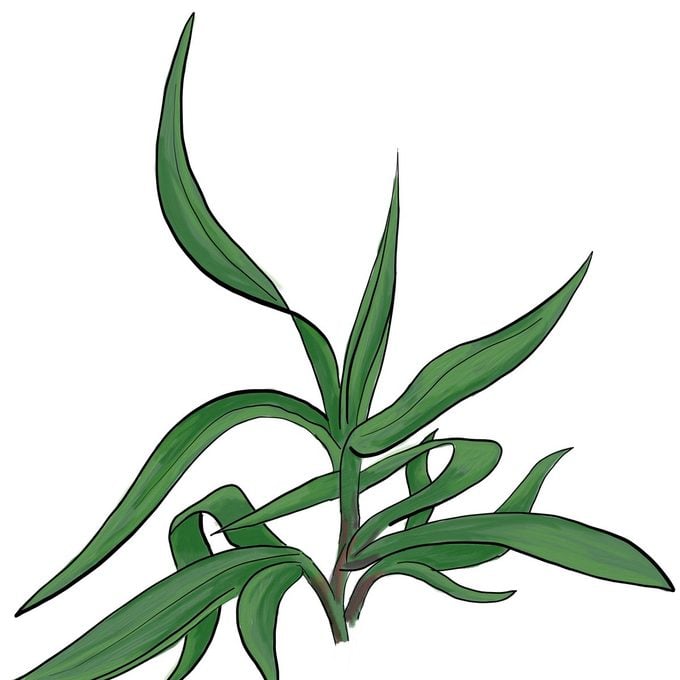
Spot It: Throughout the U.S., especially east of the Rockies, and southern Canada.
ID It: Broad clumps of flat grass-like blades spreading out in spiderlike fashion; tall seedheads from plant center.
Get Rid of It: Crabgrass preventer in late winter or early spring kills seeds, while crabgrass killer deals with mature plants; may require several treatments. Can also be removed by hand.
What to Know: Commonly pioneers in patchy lawns; produces seeds all summer long, then dies in fall. Seeds sprout the following spring.
Curly Dock (Rumex crispus)
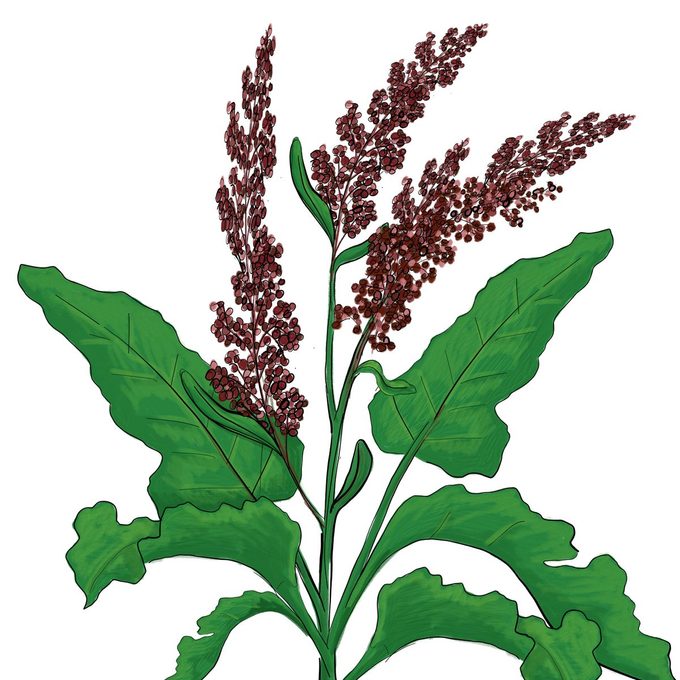
Spot It: Throughout the U.S. and Canada.
ID It: Shiny, bright green, lance-shaped leaves with wavy edges, tinged reddish-purple in summer; small greenish flowers on tall stems.
Get Rid of It: Broadleaf herbicide. Any remaining fragments of its long taproot will sprout, so hand-pulling is not usually successful unless often repeated.
What to Know: Curly dock seed can remain viable in the soil for 80 years. There’s plenty to go around, too — each curly dock plant produces hundreds, or even thousands of seeds.
Dandelion (Taraxacum spp.)
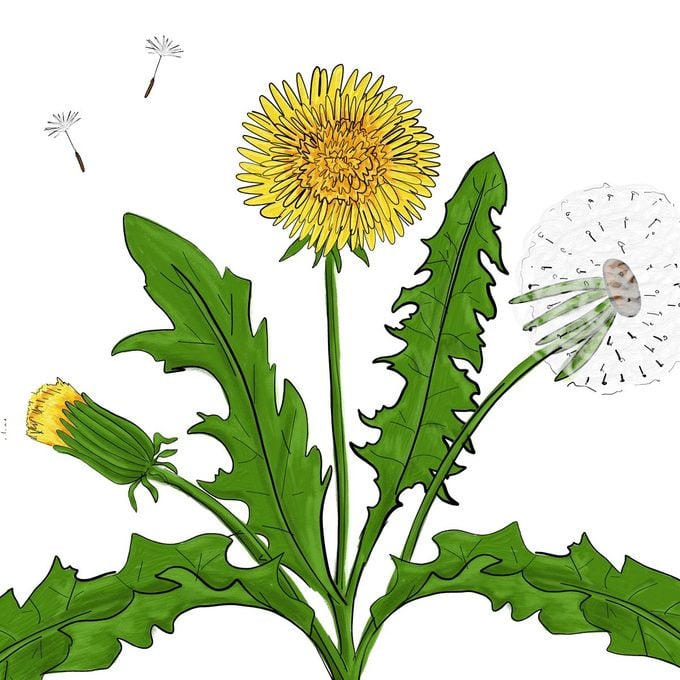
Spot It: Throughout the U.S. and Canada.
ID It: One of the easiest weeds to identify. Lance-shaped leaves with serrated leaf edges; bright yellow flowers followed by white “powder puff” seedheads.
Get Rid of It: Broadleaf herbicide or removal with dandelion fork.
What to Know: Originally imported as a flower. Tender young leaves add nutrients and a touch of bitterness to salads, while roots are used to make a detoxifying tea. Learn 7 surprising facts about dandelions.
Field Bindweed (Convolvulus arvensis)
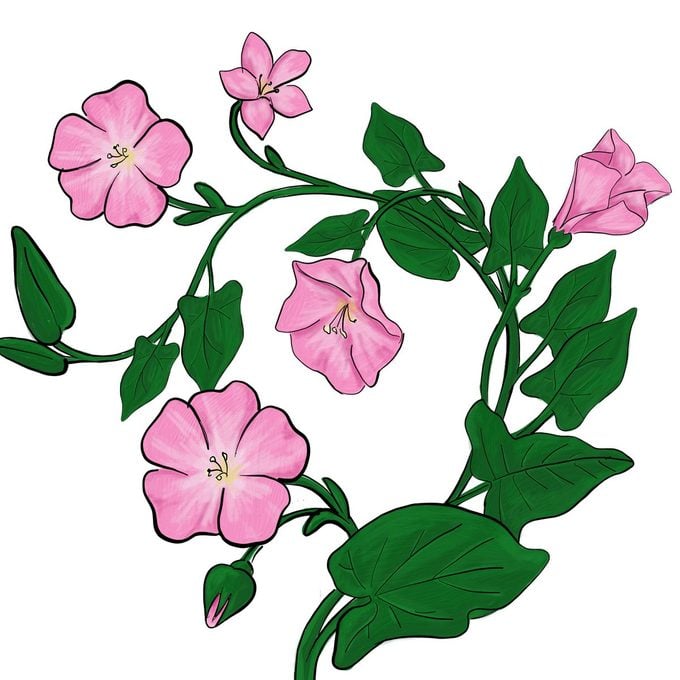
Spot It: Throughout most of the U.S. and southern Canada.
ID It: Long, twining stems with arrow-shaped leaves and funnel-shaped flowers, usually white or pink.
Get Rid of It: Broadleaf herbicide; roots are deep and fragments left after hand-pulling will sprout.
What to Know: A relative of the more ornamental morning glory vine, field bindweed is often seen growing in fields and clinging to fences and can sicken horses that graze on it.
Ground Ivy (Glechoma hederacea)
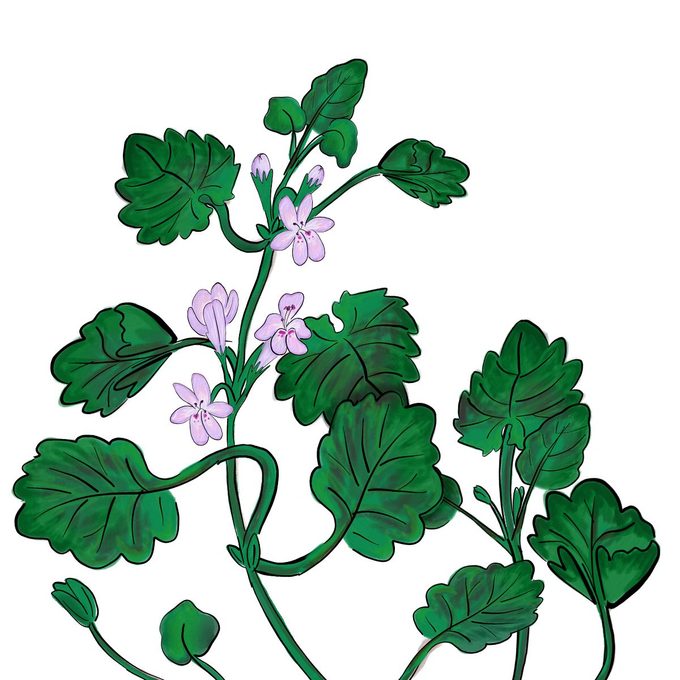
Spot It: Eastern half of the U.S. and parts of Canada.
ID It: Bright green kidney-shaped leaves topped by lavender flowers in spring and summer.
Get Rid of It: Broadleaf herbicide; hand-pulling only looks like it works until the smallest piece of root stem left in the ground reappears.
What to Know: Also known as Creeping Charlie. A hardy and useful perennial groundcover for preventing erosion, but as a member of the aggressive mint family, far too easily infiltrates home landscapes.
Japanese Knotweed (Fallopia japonica or Polygonum cuspidatum)
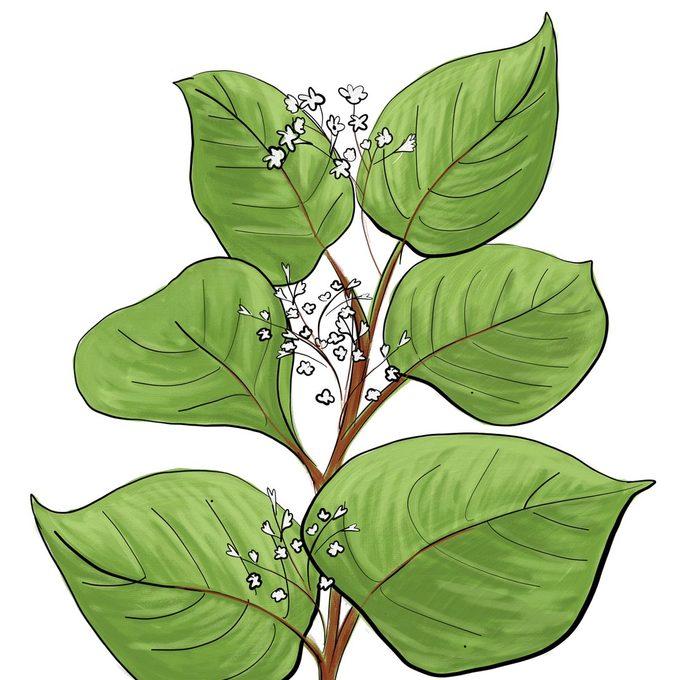
Spot It: Introduced from Asia; found in much of the U.S. and southern Canada.
ID It: An upright, shrubby habit with smooth, hollow stems and a swollen sheath where each leaf is attached; sprays of small greenish white flowers in late summer.
Get Rid of It: Glyphosate; repeated applications may be necessary.
What to Know: So invasive it can crowd out native plants and force its way through concrete. Its extract has been used as an anti-inflammatory.
Lamb’s Quarters (Chenopodium album)
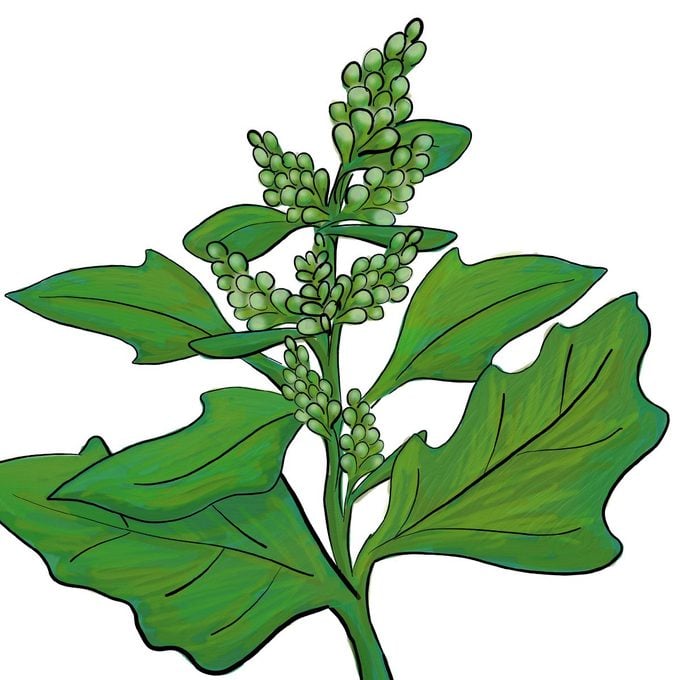
Spot It: Throughout most of the U.S. and much of Canada.
ID It: Diamond-shaped leaves are light green on top, whitish on bottom.
Get Rid of It: Easily pulled by hand when young.
What to Know: Although considered a weed, lamb’s quarters is edible and sometimes cooked or added raw to salads.
Nutsedge (Cyperus rotundus)
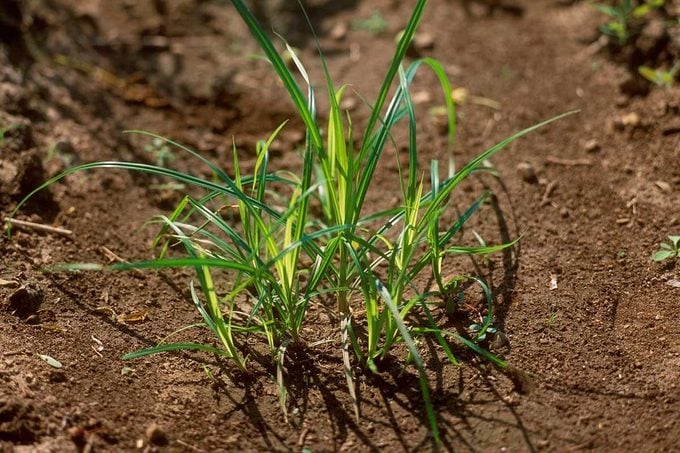
Spot It: Throughout the continental U.S. and southern Canada.
ID It: Grasslike stems either triangular or V-shaped, creating a creased appearance; yellow nutsedge has light green leaves and yellowish brown seedheads; purple nutsedge has darker green leaves and purple to reddish brown seedheads.
Get Rid of It: Nutsedge killer; small patches can be hand-dug and all tubers removed.
What to Know: Also called nutgrass because it resembles grass. A perennial often found in moist areas, it signifies poor drainage.
Pigweed (Amaranthus retroflexus)
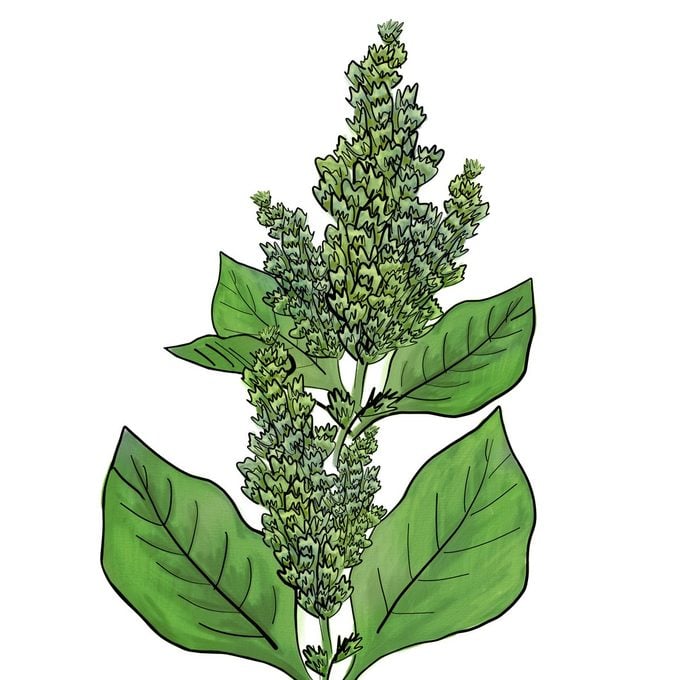
Spot It: Throughout North America, particularly the Southwest.
ID It: Leafy greens attached to a rigid, usually branchless stem two to five feet tall; small green flowers in spikes.
Get Rid of It: Hand-pull or hoe when young, before it flowers or sets seed.
What to Know: Usually grows in disturbed soil, but it can also be a sign of high fertility. Each plant can produce up to 100,000 seeds. High in protein, according to the Brooklyn Botanic Garden. Leaves are highly nutritious, too.
Poison Ivy (Toxicodendron radicans)
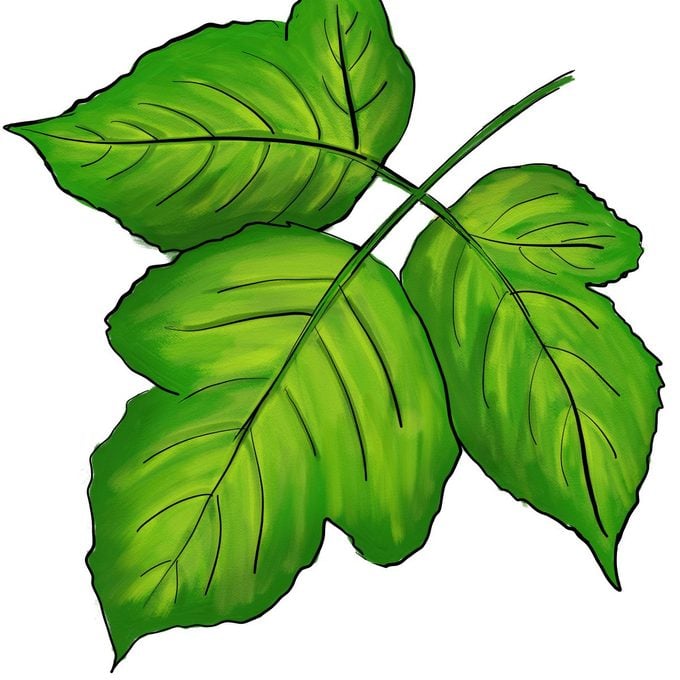
Spot It: In the U.S. east of the Rockies. Its close cousin, poison oak, is more common in the West.
ID It: Ropelike vines and leaves grow in trios that darken and enlarge over the season.
Get Rid of It: Systemic herbicide or hand-pulling (with protection from the rash-causing oil), but may require repeated effort.
What to Know: All parts of the plant contain urishoil, a substance that produces an allergic rash in most, but not all, people. Roots spread vigorously; plantlets can develop 10 feet or more from the mother plant.
Prostrate Spurge (Euphorbia maculata)
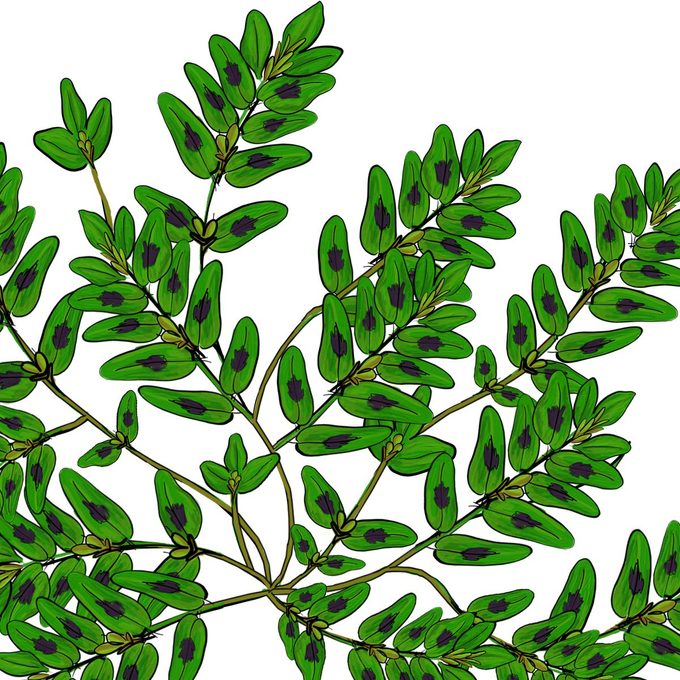
Spot It: Pacific Coast and Eastern two-thirds of U.S., plus parts of Canada.
ID It: Rosettes of small, oblong leaves, green with a purple tint, radiate from the center.
Get Rid of It: Crabgrass preventer in spring, spot treat with broadleaf herbicide, remove by hand with a dandelion fork or by hoeing, or treat with boiling water when found in sidewalks and driveways.
What to Know: Prostrate spurge is a mat-forming annual often winding through poorly maintained lawns or arising from in the cracks of sidewalks and pavement. Close relative to Spotted Spurge; both broadleaf annuals are treated the same.
Puncturevine (Tribulus terrestris)
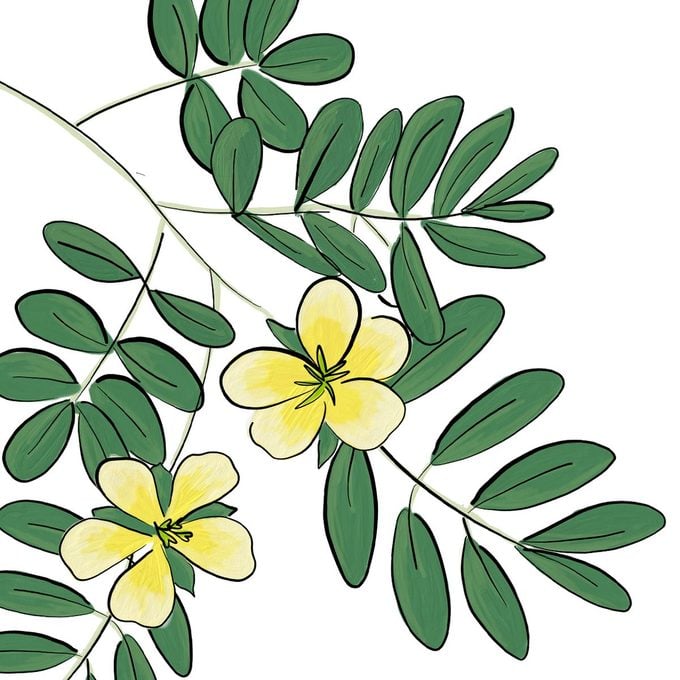
Spot It: Throughout most of the U.S. and parts of Canada.
ID It: Creeping habit with hairy, pale green leaves divided into five or seven pairs; yellow flowers in late summer followed by thorny burs.
Get Rid of It: Broadleaf herbicide.
What to Know: Prickly burs attach to shoes, pants and pets and can cut feet and puncture bike tires, hence its common name. Also called Devil’s Vine. Parts of the plant have been used as medicine or turned into performance supplements.
Purslane (Portulaca oleracea)
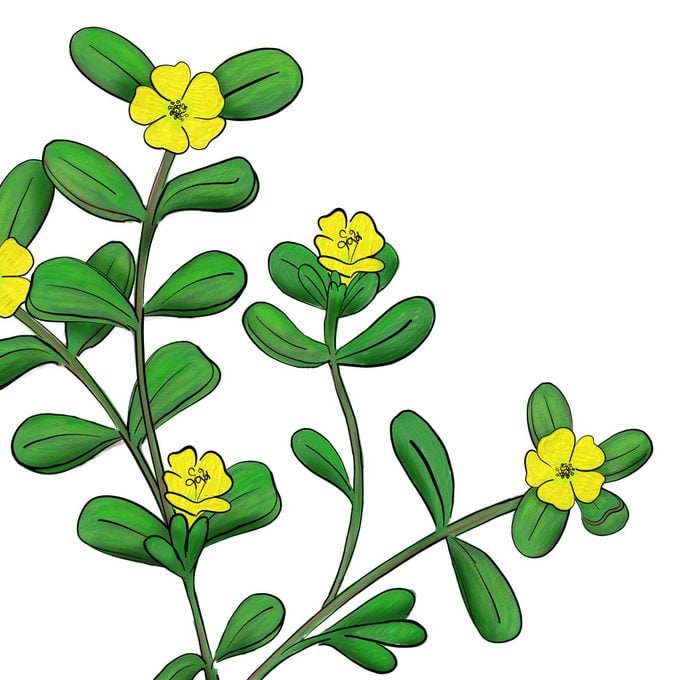
Spot It: Throughout the U.S. and parts of Canada.
ID It: Small rubbery leaves on low-growing, sprawling stems; tiny yellow flowers and cup-shaped seedpods.
Get Rid of It: Broadleaf herbicide or hand-pull.
What to Know: A weed of summer, appears in hot, dry weather and spreads wherever stems touch bare soil. It can even root from plants you’ve pulled out of the ground and thrown on the compost pile.
Quackgrass (Elymus repens)
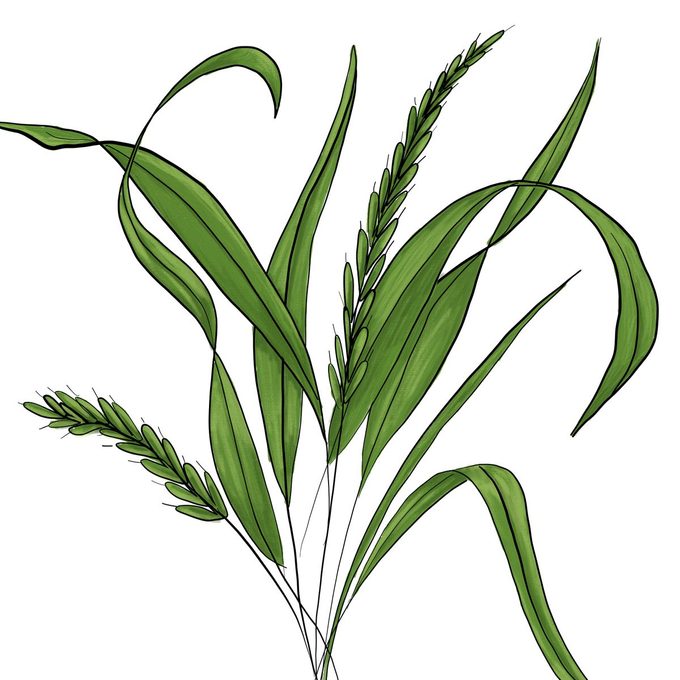
Spot It: Throughout the U.S., except the deep South.
ID It: Coarse grass blades with a rough upper portion; narrow flower spikes look like wheat.
Get Rid of It: Spot treat with grass killer or smother with dark plastic. Roots can grow up to five feet, so hand-pulling is difficult.
What to Know: Also known as witch grass, couch grass and quick grass, because it spreads so rapidly. Quackgrass spreads by seed and rhizomes and can form dense clumps if not contained.
Ragweed (Ambrosia spp.)
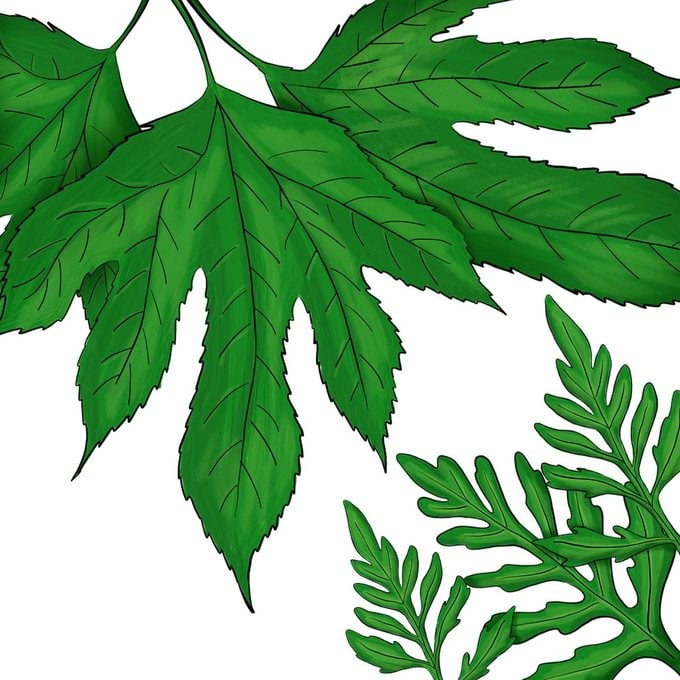
Spot It: Throughout the U.S. and Canada.
ID It: Common Ragweed (A. artemisiifolia) grows one to three feet and has fernlike leaves; Giant Ragweed (A. trifida) grows up to 12 feet and has large leaves with three to five lobes.
Get Rid of It: Broadleaf herbicide or manual removal by digging before it goes to seed.
What to Know: One ragweed plant can release a billion pollen grains. That’s why it’s one of the main culprits during hay fever season, causing congestion, sneezing and itchy eyes.
Ragweed and goldenrod can look similar. Here’s how to tell them apart.
Rough Cinquefoil (Potentilla norvegica)
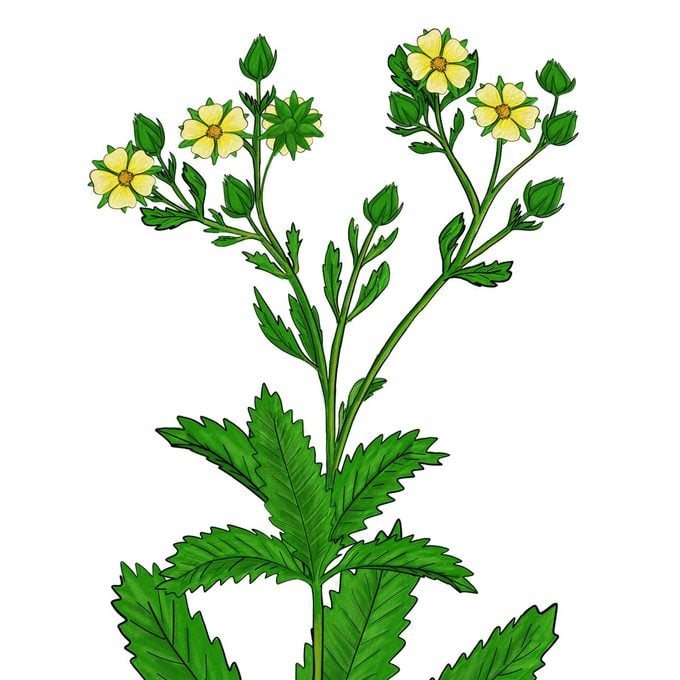
Spot It: Much of the U.S. east of the Rockies, and southern Canada.
ID It: Serrated five-lobe leaves on wiry stems; small yellow flowers in late spring and early summer.
Get Rid of It: Spot treat with broadleaf herbicide or hand-pull when young.
What to Know: The weedy cousin to the cultivated potentilla, this sprawling perennial thrives in thin, nutrient-deficient soils. It often grows as a shorter understory plant among taller companions in a prairie setting.
Sandbur (Cenchrus spp.)
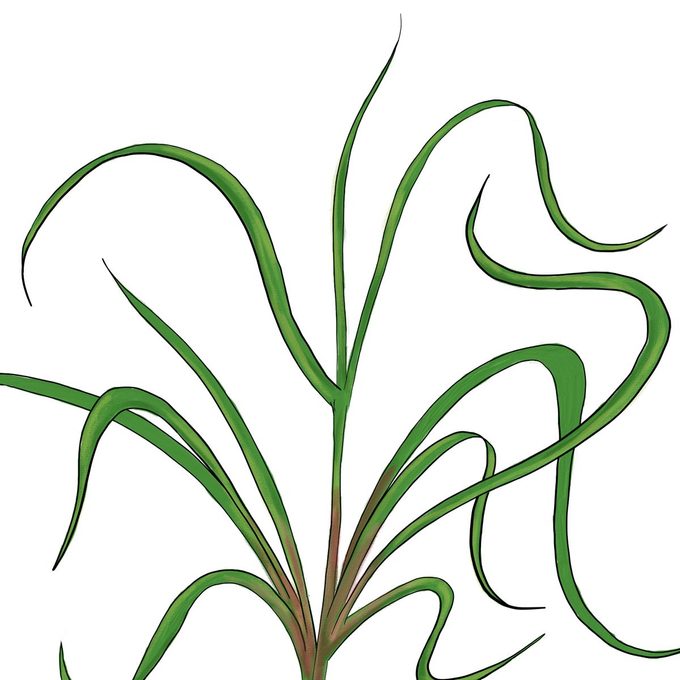
Spot It: Several species prevalent in different parts of the U.S.
ID It: Light green, grassy weed with spiky burs that turn brown as seeds ripen.
Get Rid of It: Mow regularly to keep seeds from forming; use pre-emergent herbicide to keep seeds from sprouting; crabgrass killer for established plants.
What to Know: The prickly burs of this annual can be painful if you step on them — and hard to extract when they attach to clothing. Although preferring sunny, sandy sites, sandbur grows in other conditions, too. The best defense is a thick lawn.
Sheep Sorrel (Rumex acetosella)
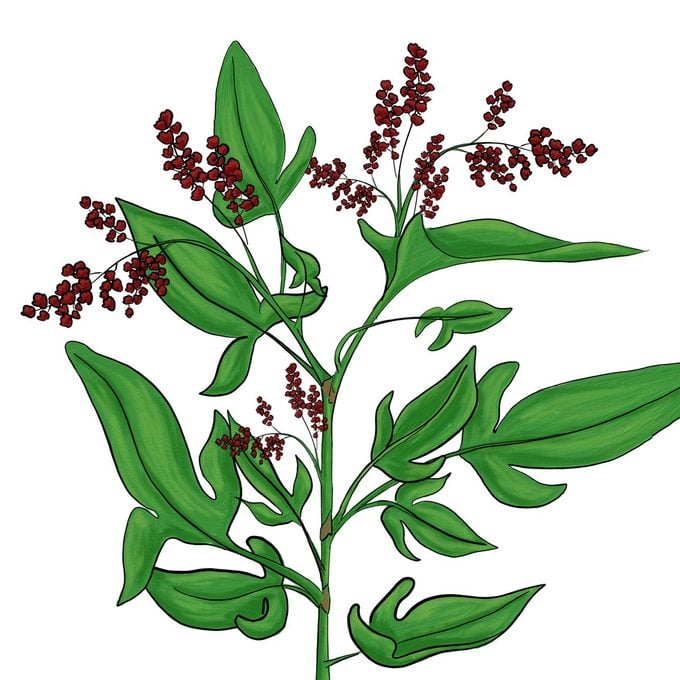
Spot It: Throughout the U.S. and southern Canada.
ID It: A rosette of foliage with arrow-shaped, one- to three-inch-long leaves; red or yellow flower spikes.
Get Rid of It: Hand-pull or spot treat with a broadleaf herbicide.
What to Know: Also known as Red Sorrel or Field Sorrel, it’s a perennial with edible foliage sometimes added to salads. However, the greens have a high amount of oxalic acid, which can be toxic to kidneys if consumed in large quantities.
Shepherd’s Purse (Capsella bursa-pastoris)
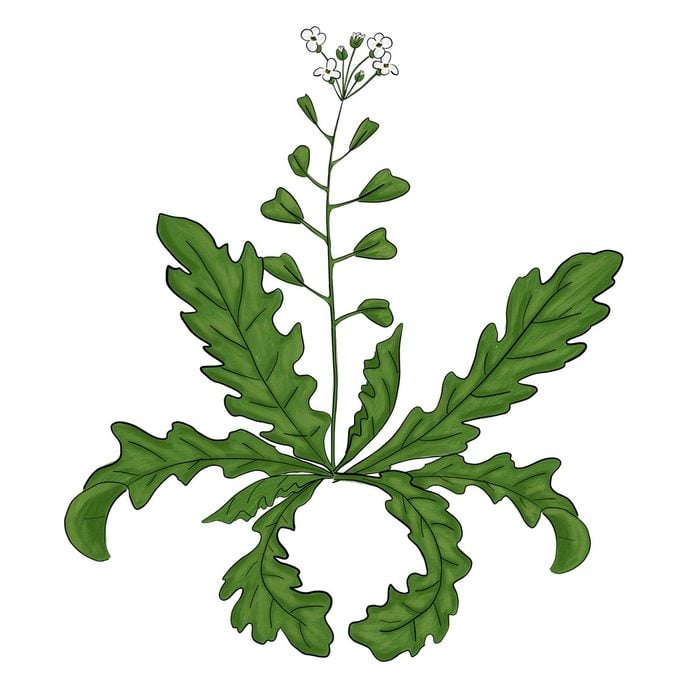
Spot It: Throughout North America.
ID It: Arrow-shaped, toothed leaves and tiny white flower clusters on 18-inch stems, followed by seeds in triangular pods.
Get Rid of It: Broadleaf herbicide or hand-pull.
What to Know: Named for shape of seedpods, said to resemble leather purses shepherds carried in the Middle Ages. Parts of the plant have been used to make medicines to treat nosebleeds and abnormally heavy menstrual bleeding.
Stinging Nettle (Urtica dioica)
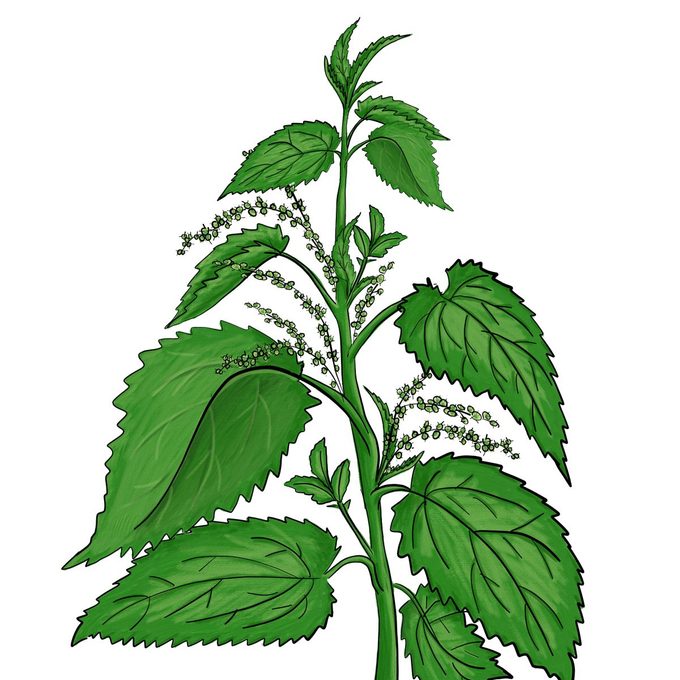
Spot It: Throughout the continental U.S. and southern Canada.
ID It: Serrated green leaves on erect green stems that grow up to four feet tall.
Get Rid of It: Systemic herbicide; hand-pulling is not practical, given the plant’s stinging daggers.
What to Know: Named for the tiny daggers felt if you try to grasp the leaves. Said to have many medicinal uses dating to ancient Greece, when it was used as a diuretic and laxative.
White Clover (Trifolium repens)
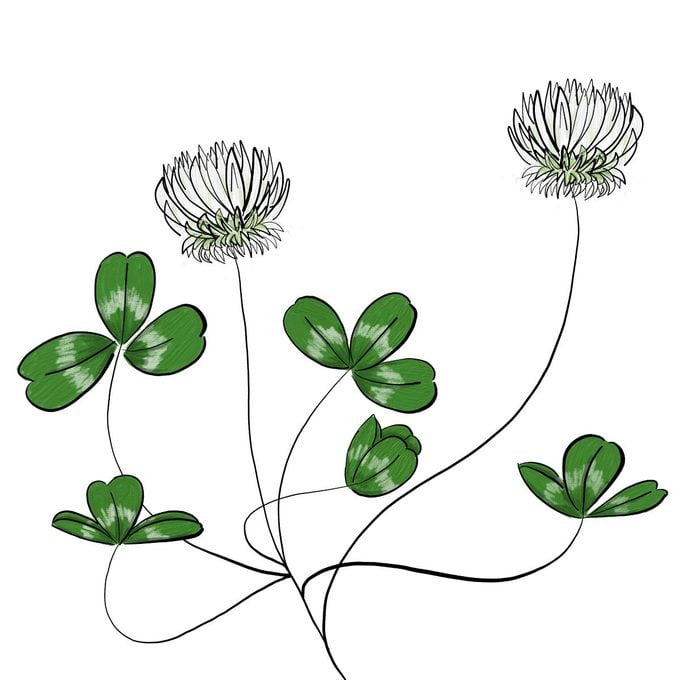
Spot It: European native; found throughout North America.
ID It: Green three-petaled leaves and small white flowerheads.
Get Rid of It: Broadleaf herbicide.
What to Know: Once welcomed into American lawns — and perhaps should be again. Makes its own fertilizer by converting nitrogen in the air and is a key nectar source for honeybees. White clover can also distract rabbits from browsing your garden, as it’s their preferred food source.
Yellow Woodsorrel (Oxalis stricta)
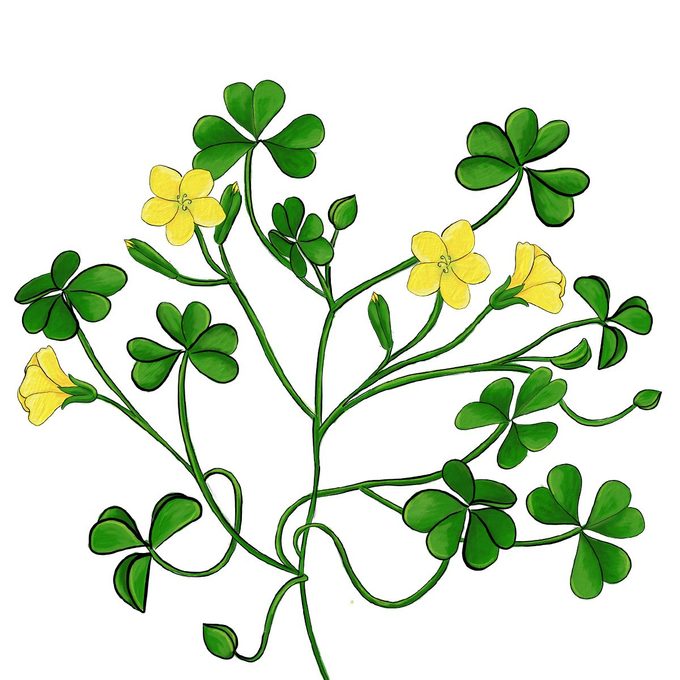
Spot It: Throughout the U.S., especially along the coasts, and southern Canada.
ID It: A trio of pale green, heart-shaped leaves, similar to clover; small, bright yellow flowers, followed by elongated seedpods.
Get Rid of It: Broadleaf herbicide; may require more than one treatment.
What to Know: Invades thin patches of lawn, so keep your lawn thick and lush. It’s most common in dry, open locations. It’s burgundy-leaf cousin, Oxalis triangularis, is a popular houseplant.




















